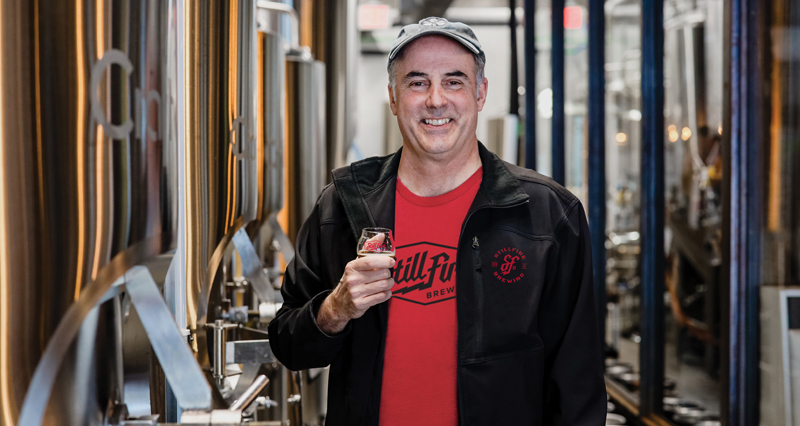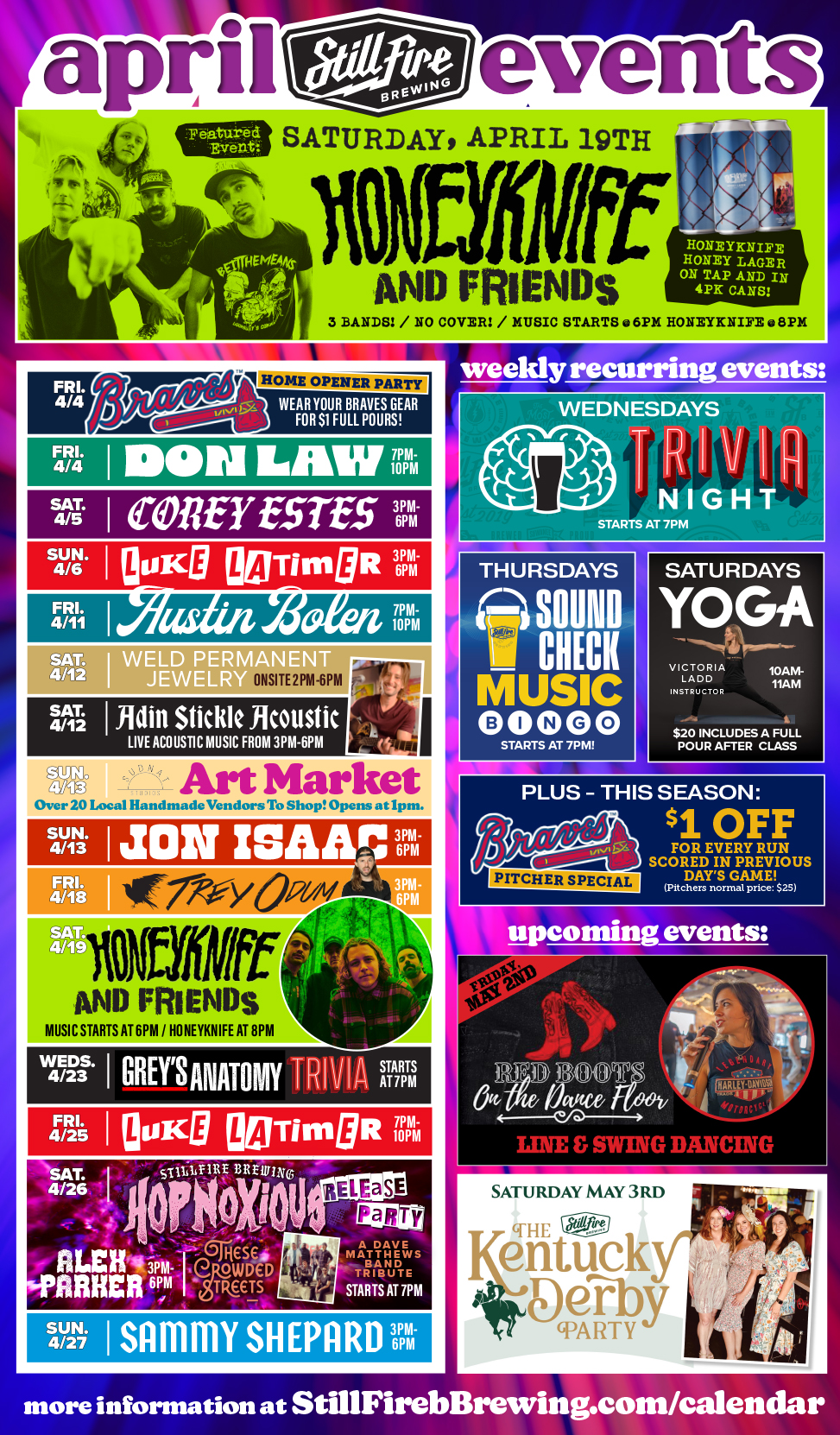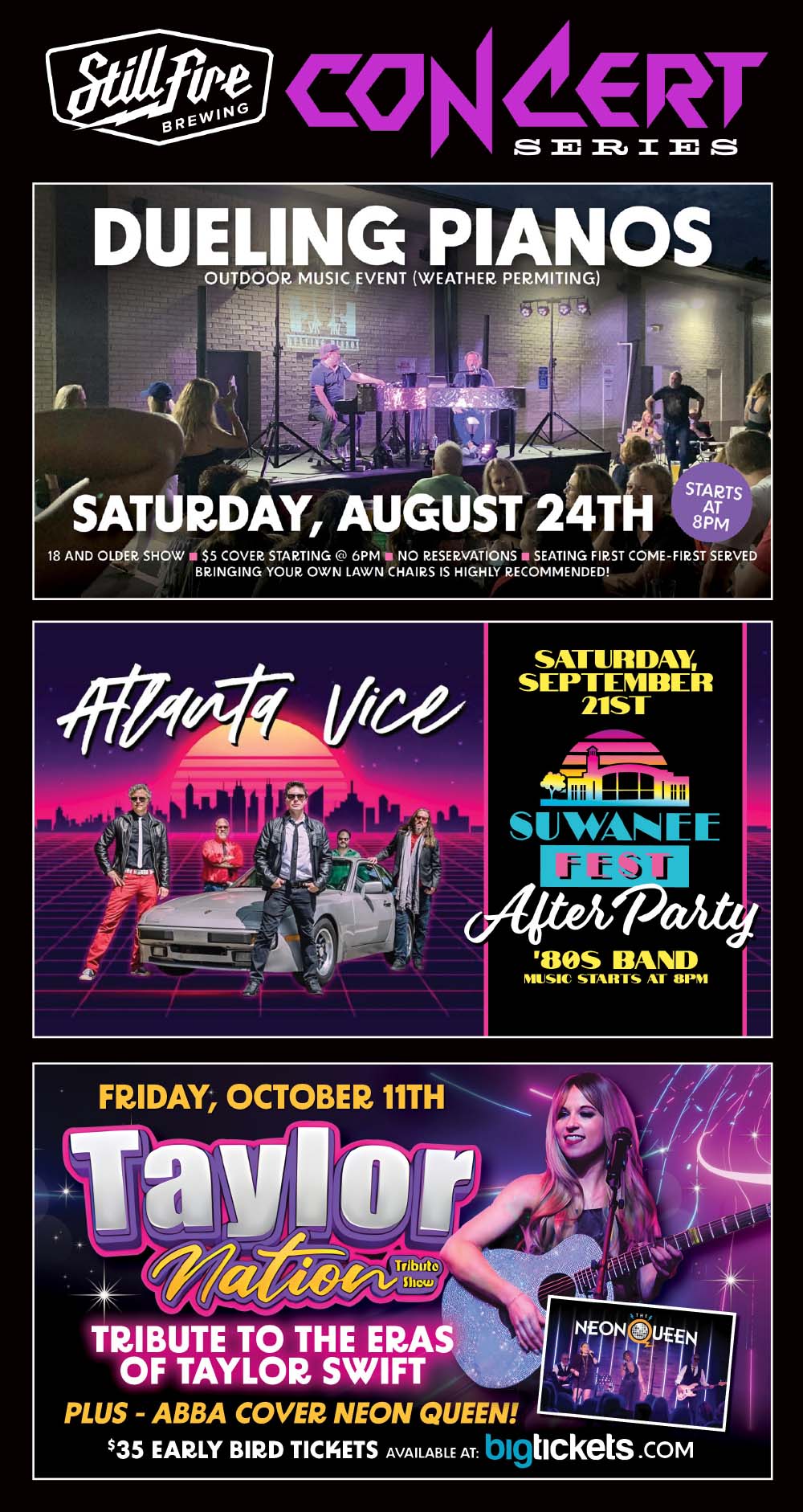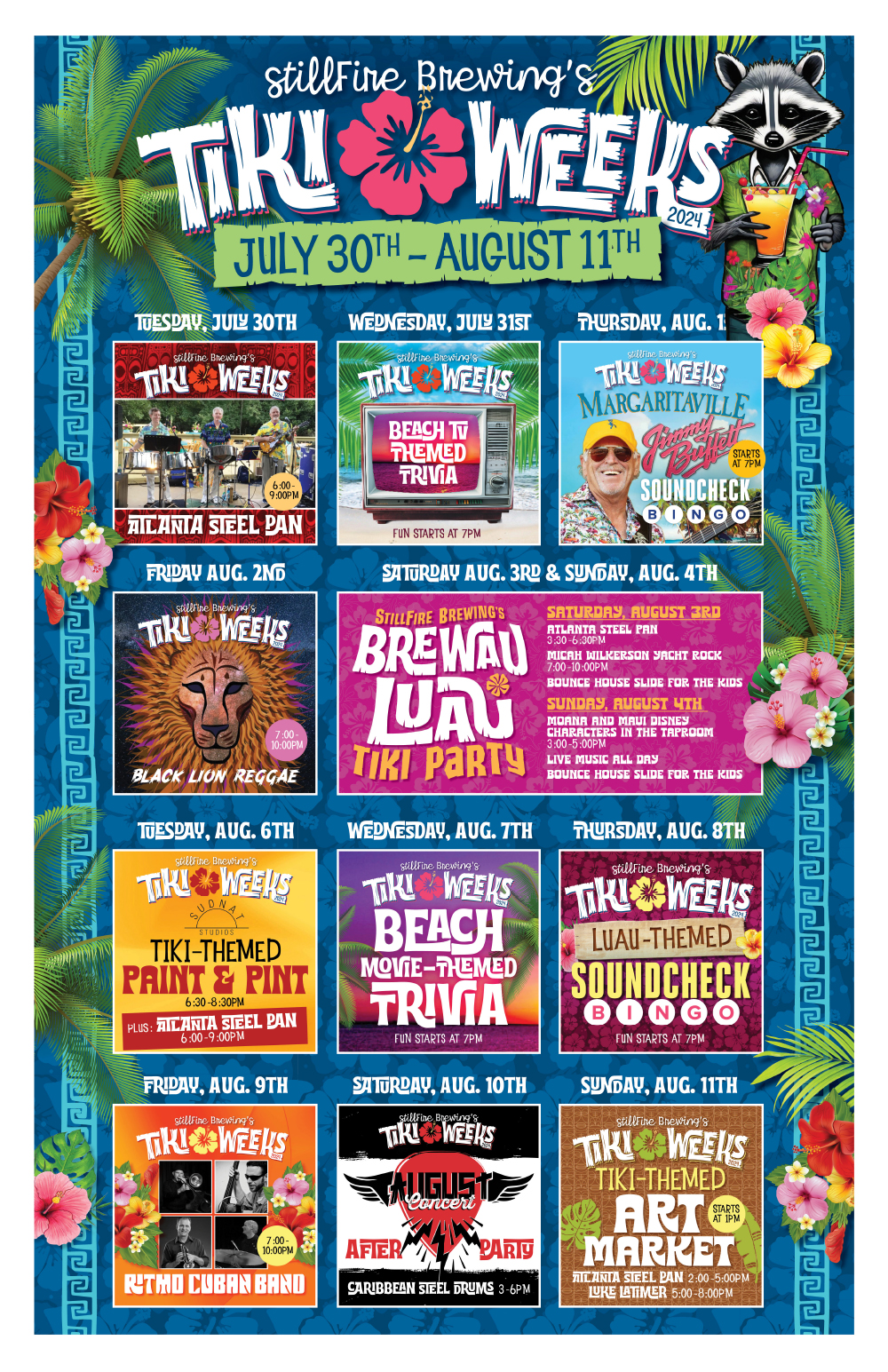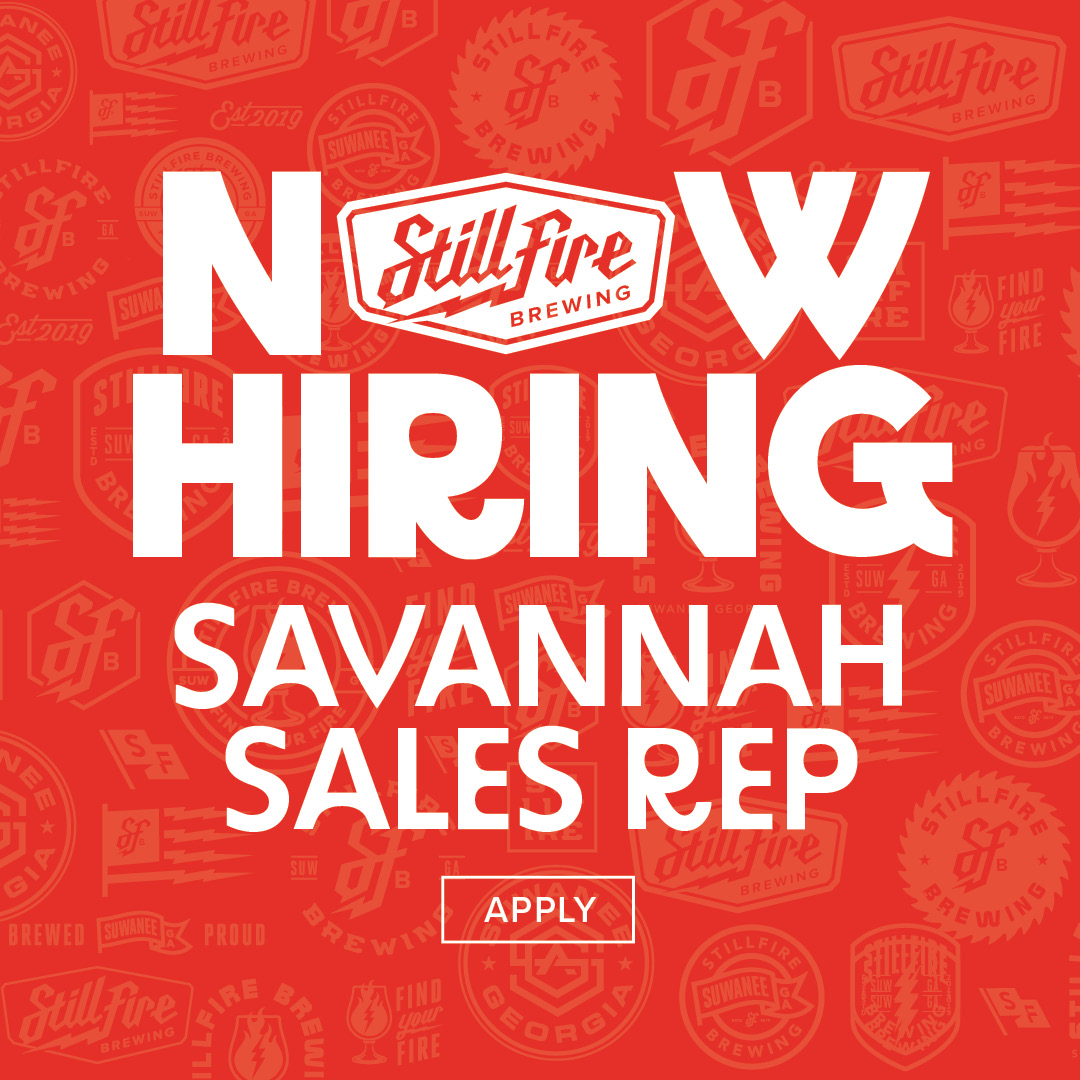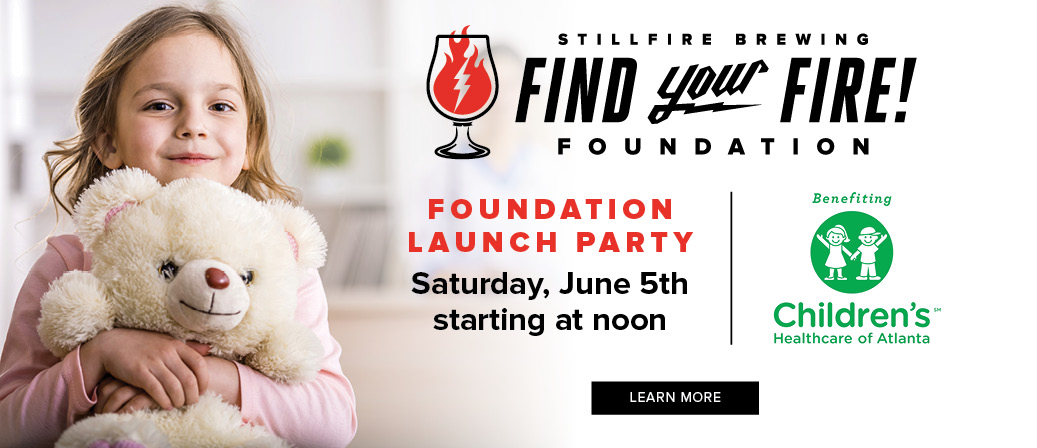If you weren’t involved in brewing, what would you be doing?
I’d probably be traveling. I’ve flown around the world many times, and I’ve also driven my RV around the country. I’ve also gone on cruises. I like people, so getting out and seeing new things and meeting new people is what my wife and I like to do.
How did you get into brewing beer?
I knew there were people who made beer back when I was at the Air Force Academy in Colorado Springs. Unfortunately, it was still illegal (leftover from Prohibition), so I dismissed it as a hobby when it was first legalized. I helped a friend homebrew in their kitchen a couple of times by drinking their beer and watching a pot boil. It took a Christmas present from my wife to get me started. It was not just a can of syrup, it was a proper beginner homebrew kit with 2 plastic buckets, a glass carboy (that I still have), and a bunch of hoses and wands I had to figure out what to do with. She got it at the local homebrew shop, which became the place I hung out at to soak up the technique. My first batch wasn’t bad at all, so I kept taking baby steps forward even though sometimes I went backwards.
Where does your passion for beer come from?
I can blame my Dad’s side of the family being Irish pub-owning beer drinkers who went bowling all the time. There was no shortage of exposure to beer. Traveling overseas with the Air Force introduced me to a world where beer wasn’t the same everywhere, and imported beer tasted so much different at the source compared to a slow ship across the ocean and a week on the dock. Even before Craft Beer was a blip on my radar, I was searching for new things.
Can you name a few breweries you’ve assisted in brewing at?
I have always been a guest brewer and have never been paid in anything other than friendship and camaraderie to brew beer. Sometimes we were brewing my recipe or a recipe I collaborated on. I’ve done that at Sierra Nevada, the Wrecking Bar, Twain’s, 5 Seasons, Bear Creek, Rogue Issaquah and Wynkoop. I have rolled up my sleeves, helped and been a general nuisance at Full Sail, Midnight Sun, Moose’s Tooth, Rogue Newport, Elysian, 21st Amendment, Magnolia, Thirsty Bear, Buckhead Brewing, HUB, Tugboat, several Rock Bottoms, Green Flash, Stone, Ballast Point, and a few others you may have heard of.
Tell us a little bit about the awards you have won.
I was Mid-South Homebrewer of the Year several times. I won Gold, Silver and Bronze medals at the National Homebrew contest for beer and mead. There were many contests I won Best of Show at, including on the west coast and Alaska. One time I saw the prize in a magazine, a Space Shuttle trophy for Best of Show for the Commander SAAZ contest in Coco Beach, so I entered and won. One of the coolest awards was the year the US Open invited me to enter my award-winning Scotch Ale. I went head to head with other homebrewers and an array of professional brewers. I was the only homebrewer to win a medal that year and I won a Gold by beating the Pros.
How did you learn the craft?
I have learned a lot by brewing with the best homebrewers and professionals in the world. You never know what you don’t know until you discover it. Everyone does things a little differently, and often those differences are what makes the craft and art. Sensory training helps root out problems in your brewery, even if it is simply a closet, a bucket and a pot on the stove. BJCP volunteers run sensory classes in various cities. Siebel Institute also does a full and half day sensory class I have completed. I just completed the Siebel Comprehensive Brewing Course to find out all the things I either didn’t know or had forgotten. The best brewing experience is to brew beer. Celebrate your victories but always drink your mistakes.
You are the current BJCP Vice President. Tell us a little about the BJCP and beer judge certification.
The BJCP is an all-volunteer organization that began in 1985. It grew from an initial group of people taking an exam into the organization most recognized in the world to certify beer judges. The style guide is a summation of the beer styles as most people would understand them at the time of its writing. It allows contests, brewers and judges to have a common frame of reference, and it is how people first find us. Beer has been evolving for centuries, so the BJCP doesn’t claim to be any sort of ruling body of what should be brewed. Instead, we give contest organizers a way to skip the step of trying to tell the judges what they will consider the criteria against which the beer will be judged. The two largest commercial beer competitions in the world, the Great American Beer Festival and the World Beer Cup, run by the Brewer’s Association, write specific contest guidelines every year. They are trying to be on the leading edge of commercial trends and recognize excellence. The BJCP in contrast has open categories for experimentation and fusing multiple aspects of different styles. If a blip becomes a trend and then garners enough interest at contests, the BJCP will incorporate the variables that make that new style unique in the next update.
What does it take to get into beer judging?
First you must have an interest in judging. Then there is a journey of self-education. Importantly, you must like to drink beer. Not all beers of course, but at least a reasonable variety. There are classes put on by many homebrew clubs as well as local contests a person can volunteer at to see what happens when people judge beer in a contest environment. A person can drink and enjoy a beer at a pub or at home but evaluating and judging takes an additional skill set. It is not difficult to learn, but it takes time and experience. That is where the style guidelines come in. The brewer declares the style and the judge then applies the guidelines to score the beer. This is the same way a judge at a dog show applies the breed standard to the dog they are judging. Unlike the dog show, all BJCP sanctioned judging is done in the blind. The beer is either presented in a cup by a neutral steward or in a plain bottle or can. There is no “dog handler” to try and make the beer show better, and the judges have no idea who the brewer is or where the beer came from.
How does one get to Grand Master level V?
The wonderful thing about the BJCP program is that it takes both demonstrated ability and judging experience to rise in the ranks. Each rank requires both judging experience points and an exam score at a minimum level. A prospective beer judge first reads an online study guide in order to take an online multiple choice and T/F Pass/Fail timed online entrance exam. Passing the online exam qualifies them to take a six-beer tasting exam where they fill out scoresheets in a simulated contest environment without the aid of any outside information. Passing that exam makes them a Recognized Judge. If they score high enough and gather enough experience points, they can advance to Certified Judge. To become ranked a National Judge, the candidate must score at least an 80 on the tasting exam, have enough experience points, then score an 80 or above on a five-question essay exam. A Master Judge needs twice the experience points of a National Judge and must have scores of 90 or above on both the essay and the tasting exams. Master Judge is the most difficult rank to attain in the BJCP. A Grand Master I Judge is a Master Judge who attains 100 experience points, half of which are judging points and they must volunteer in service positions in the BJCP. Each Grand Master level is another 100 points and additional service requirement, so I have done that 5 times and should make it to Level 6 sometime in 2020.
What do you look for when judging a great beer?
First, it must fit the declared style or else it cannot garner a top score. Then it should be free of flaws, either brewing or stylistic. The final thing that makes a beer great is why people drink beer and brew beer in the first place. It needs to be something that draws you in by the look and the aroma, have a wonderful flavor, and finishes in a way that forces you to drink more. There are beers that are very complex, but they aren’t complicated. There are other beers that are simple and straightforward, yet they aren’t boring. Those are great beers.
Why did you want to come brew at StillFire? Any local ties to the community?
I was read in on the secret by Randall and John, then asked to join the team. When I say team, I really mean it. They weren’t starting a brewery to simply make beer. They wanted a brewery dedicated to great beer. That is something I am committed to. I want people to come in to try their favorite beer and leave with a new favorite. The beauty of Stillfire is that I will get to talk to our customers every day. We aren’t a beer factory, we are a craft brewery making the beer you want to drink. Just like John, Randall, and I talk about beer and figure out how to make current things better and maybe even new better things we have yet to talk about, our customers will help guide us to be better. I think we all have strengths, and I also think we listen to each other well. If I was just reading about Stillfire today for the first time, I would be wishing it was me brewing there. Brewing at a brewery so well located is something I have always wanted to do. I live a few miles north and west in Cumming, where I have lived the past 25 years. The brewery couldn’t be more convenient to me unless it was in my driveway. Anyone who says they love long drives in Atlanta needs a beer.
If you had to pick a favorite beer that is going to be at the brewery and offer it to a stranger, which one would it be and why?
I would have to ask them what type of beer they like first. That is one way to win a customer for life if you make their favorite type of beer already, and your version is the best they have ever tasted. Even if someone says they don’t like beer, I might be able to find something they will like. A beer geek may be the type of person who would enjoy the unique or the bold. I would steer them towards something barrel-aged or with a unique profile. It might we wild, strong, or crazy complex, but I wouldn’t want them to be underwhelmed. If they were a fan of German or English styles, I would try to hook them up with my rendition of a classic. The non-beer drinker may be looking for something simple, or they may be enticed if the beer leads with fruit, like our Blood Orange Witbier. I would also be situational and offer them a different beer on a hot summer day than in the middle of a cold, damp winter night.
Are there any current beer trends? Will you be brewing beer to follow those trends at StillFire?
Thirty years ago, when craft beer was more of an aberration than a movement, every beer had “Red” in the name. In 2019 it is IPA. The latest reimagining of IPA is generally fruity, juicy, hazy, tropical, or all four. This New England style was actually around for a while, but nobody outside the region noticed. Now because of the reduced bitterness and fruit being the leading flavor, a lot more people are saying they like IPAs than possibly ever before. Fruited sours are also popping up everywhere. Sometimes a fruit addition is used and other times there are fruity hops that give the beer this characteristic. The sour beers can be intensely sour or dialed down to where they are no tarter than orange juice. A brewery ignores trends at its own risk, but it is all about keeping your customers happy. A smarter business school prophet than me said it is ten times easier to keep a customer than find a new one. We will have a very innovative array of beer for people to try every time they come in. Some will always be available, while some will be seasonal or rotated out to keep it exciting. Classic beers styles weren’t just given that name without reason. Every single American style of beer was based on a classic European style that was adapted to American ingredients and American palates. We plan on doing some straight up the way they always have been brewed, while others will be new interpretations, fusions of several styles, or twisted into something truly unique. It has always been fun brewing for myself and my friends. I hope to make a lot of new friends in the next year. Brewers who became trendsetters most of the time didn’t know what they were starting. They experimented and brewed beer that they thought was really good and also differed from what other brewers were doing. It was their customers that made it a trend. We plan on keeping it interesting and giving our customers something they can hopefully decide is trend-worthy.
What’s the furthest you’ve traveled to drink beer?
I haven’t been to Australia or New Zealand yet, but I have been to the Philippines. I have been to South Korea and Japan, but the stop at Wake Island in the middle of the Pacific was remote, maybe even more remote than Diego Garcia. India was the easternmost, but I would say being in Tehran was quite unique. Alaska and Iceland in January, Scandinavia in the spring, and Russia in the summer.

